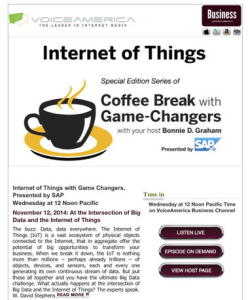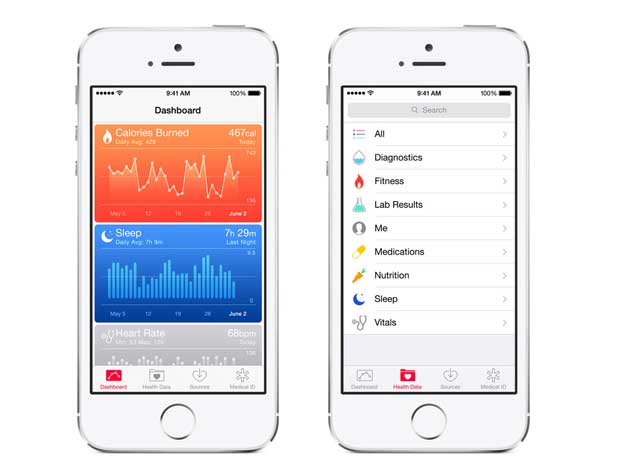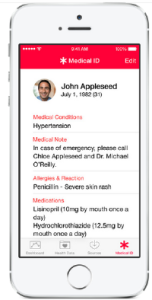I was on a live edition of “Coffee Break With Game-Changers” a few hours ago with panelists Sherryanne Meyer of Air Products and Chemicals and Sven Denecken of SAP, talking about tech projections for 2015.
Here’s what I said about my prognostications:
“I predict that 2015 will be the year that the Internet of Things penetrates consumer consciousness — because of the Apple Watch. The watch will unite both health and smart home apps and devices, and that will mean you’ll be able to access all that usability just by looking at your watch, without having to fumble for your phone and open a specific app.
If Apple chooses to share the watch’s API on the IFTTT – If This Then That — site, the Apple phone’s adoption – and usability — will go into warp speed. We won’t have to wait for Apple or developers to come up with novel ways of using the phone and the related devices — makers and just plain folks using IFTTT will contribute their own “recipes” linking them. This “democratization of data” is one of the most powerful – and under-appreciated – aspects of the IoT. In fact, Sherryanne, I think one of the most interesting IoT strategy questions for business is going to be that we now have the ability to share real time data with everyone in the company who needs it – and even with supply chain and distribution networks – and we’ll start to see some discussion of how we’ll have to change management practices to capitalize on this this instant ability to share.
(Sven will be interested in this one) In 2015, the IoT is also going to speed the development of fog computing, where the vast quantities of data generated by the IoT will mean a switch to processing data “at the edge,” and only passing on relevant data to the cloud, rather than overwhelming it with data – most of which is irrelevant.
In 2015 the IoT is also going to become more of a factor in the manufacturing world. The success of GE’s Durathon battery plant and German “Industry 4.0” manufacturers such as Siemans will mean that more companies will develop incremental IoT strategies, where they’ll begin to implement things such as sensors on the assembly line to allow real-time adjustments, then build on that familiarity with the IoT to eventually bring about revolutionary changes in every aspect of their operations.
2015 will also be the year when we really get serious about IoT security and privacy, driven by the increasing public concern about the erosion of privacy. I predict that if anything can hold back the IoT at this point, it will be failure to take privacy and security seriously. The public trust is extremely fragile: if even some fledgling startup is responsible for a privacy breach, the public will tend to tar the entire industry with the same brush, and that could be disastrous for all IoT firms. Look for the FTC to start scrutinizing IoT claims and levying more fines for insufficient security.”
What’s your take on the year ahead? Would love your comments!





